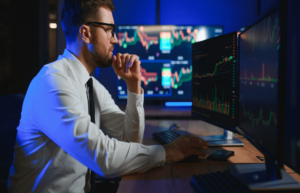CFD Trading vs. Traditional Stock Investment: A Comprehensive Comparison

The world of investing offers diverse strategies, each suited to different goals, risk levels, and investment styles. Two popular yet distinct approaches are Contracts for Difference (CFD) trading and traditional stock investing. Understanding the differences between these methods can help investors align their strategies with their financial objectives. Here, we compare online CFD trading and traditional stock investing to clarify the pros and cons for both new and experienced investors.
Traditional Stock Investment
Traditional stock investment involves buying shares of a company, making you a part-owner with voting rights and, potentially, access to dividends. Stock investors generally take a long-term view, aiming to benefit from the stock’s value appreciation over time and dividend income from established companies. The performance of this investment strategy is closely tied to the company’s success and broader market trends.
One of the main advantages of stock investing is dividend income, which can provide steady returns, especially with mature companies. Ownership of shares also grants voting rights, giving shareholders a voice in significant company decisions. Stocks are often seen as more stable, long-term investments, serving as a hedge against inflation and a steady path to wealth building.
However, stock investing can require substantial capital, especially when purchasing shares in large, well-established companies. Additionally, the success of this investment strategy depends on the companies in your portfolio, exposing you to company-specific risks. If a company underperforms or faces challenges, your investment’s value may decline.
CFD Trading
On the other hand, CFD trading is a more flexible, dynamic approach. CFDs allow traders to speculate on price movements across various assets, such as stocks, indices, commodities, and currencies, without owning the underlying asset. A major benefit of CFD trading is its flexibility: traders can profit from both rising and falling markets by going long (buying) or short (selling) based on whether they anticipate a price increase or decrease. This ability to trade in both directions lets CFD traders capitalize on market volatility. Furthermore, CFDs are generally focused on short-term trading, appealing to those who prefer an active, hands-on trading style.
However, CFD trading comes with higher risks. Leveraged positions can magnify potential losses, and the fast-paced nature of CFD trading requires continuous market monitoring. Successful online CFD trading requires a solid understanding of technical analysis, market trends, and effective risk management. Due to the short-term focus and heightened risks, CFD trading is often suited to investors with a higher risk tolerance and the capacity to closely monitor market developments.
Risk and Return Comparison
When comparing risk and return, these two methods represent different approaches. Traditional stock investing is usually considered a safer, long-term strategy that provides steady but potentially modest returns. This approach is ideal for investors looking for a more passive investment style, with less emphasis on daily market fluctuations.
In contrast, CFD trading, with its focus on short-term market movements and leveraged positions, presents higher potential returns but also higher risks. It appeals to those who seek active involvement in the markets and are comfortable with higher risk exposure.
Choosing the Right Path
The decision between online CFD trading and traditional stock investing depends largely on your financial goals, risk tolerance, and investment style. For those seeking steady, long-term growth, stock investing may be a better fit. For investors looking to engage actively with the markets and profit from short-term movements, CFD trading may be more appealing.
Both traditional stock investing and CFD trading offer unique advantages and challenges. Success in either approach relies on a clear strategy, a strong understanding of the markets, and a disciplined approach to risk management. Educating yourself, staying informed about market trends, and continuously refining your strategy are key to navigating the complex world of investing—whether you are pursuing a long-term, steady growth strategy or a more dynamic, short-term trading approach.







